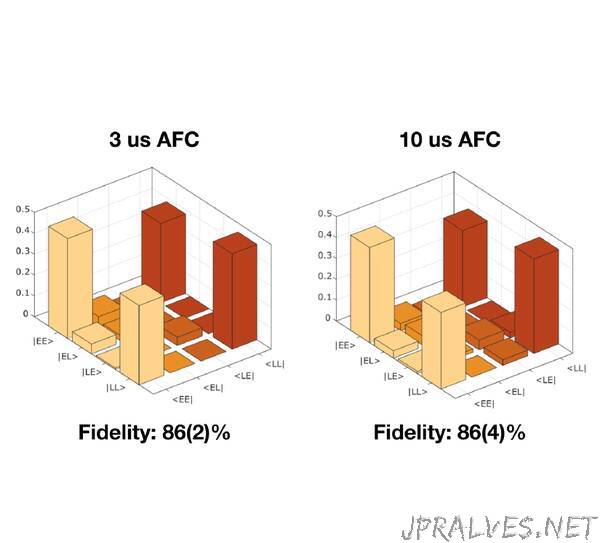
“New solid-state device represents important step toward quantum networks; holds quantum state for up to 28 microseconds
Researchers have developed a practical integrated quantum memory device based on a new fiber-coupled waveguide written into a rare-earth doped crystal. Quantum memory stores a quantum state for later retrieval much like computer memory stores binary information. The fiber-integrated solid-state platform can hold a quantum state up to three orders of magnitude longer than previously demonstrated in integrated memories.
Jelena V. Rakonjac from ICFO-Institut de Ciencies Fotoniques in Spain presented the new findings at the Optica’s Quantum 2.0 2022 conference 13 – 16 June 2022. Register and view the recorded presentation: Quantum 2.0.
“A quantum memory is a device which can store a quantum state, typically carried using photons. It is a key component of near-term quantum repeater schemes which are needed to create large-scale quantum networks, analogous to classical repeaters in the current classical networks we use today,” explained Rakonjac. “For practical use, quantum memories need to be directly integrated into photonic structures so they can be combined with existing on-chip photonic technologies or directly connected with optical fibers to create quantum networks. The device should also be highly multiplexed, meaning it should be able to store quantum states using temporal, spectral and spatial degrees of freedom.”
To make a quantum memory device that meets these requirements, the researchers used a Pr3+:Y2SiO5 crystal because rare-earth doped crystals have previously been used for multimode storage. They applied femtosecond micromachining to write a waveguide into the crystal and then glued optical fibers to both facets of the crystal. This allowed the fibers to directly interface with the waveguide without the need for any bulk optics to couple light into the memory. The resulting device showed an in-out transmission efficiency of 17% for typical operation in a vacuum cooled to 3 K.
The researchers demonstrated the new device by using it to store quantum light in the form of light-matter entanglement between a signal photon at 606 nm, which is compatible with storage in the memory, and an idler photon at a telecom wavelength, which is necessary for heralding entanglement in a quantum repeater.
They showed that the new memory device could store optically excited photons for 2 to 28 microseconds and that photon-pair entanglement was preserved after storage. The new results demonstrate that the fiber-integrated solid-state platform is a suitable candidate for practical integrated quantum memory.
Rakonjac added, “To further develop this system for use in a quantum network, the device efficiency can be improved by using different types of waveguides which are currently being tested, and the storage time can be extended by transferring the qubits to long-lived spin states, which also opens the door to on-demand read-out of the memory.””
